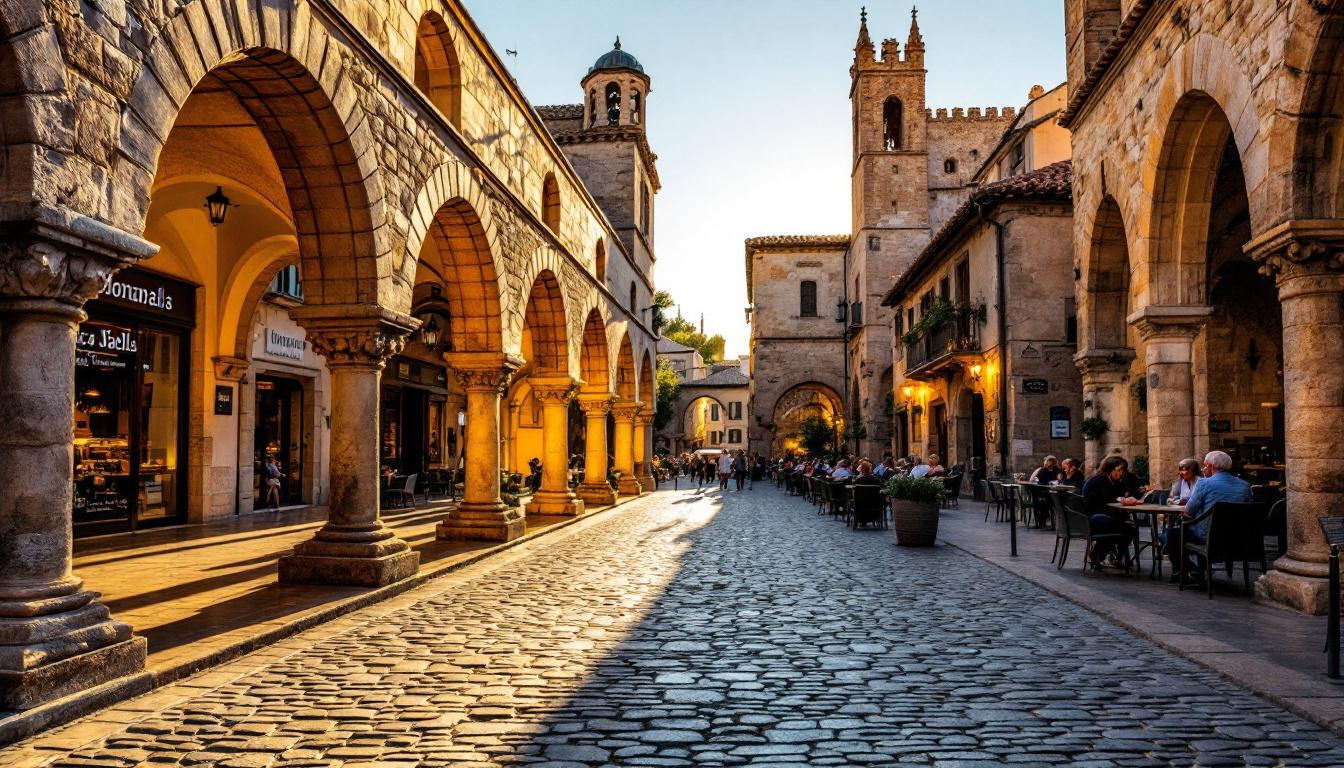Catalonia’s medieval villages have long captured travelers’ imaginations, but few know about the municipality with the longest name in the region. Hidden amid the rolling landscapes of Girona province lies a historical treasure that feels frozen in time – Cruïlles, Monells i Sant Sadurní de l’Heura.
A triple gem with a 43-character name
This extraordinary destination isn’t just one village but three medieval settlements united administratively in 1974, creating the longest municipal name in Catalonia at 43 characters. With just 1,319 residents spread across nearly 100 square kilometers, these villages offer an authentic glimpse into Catalonia’s medieval past without the crowds found in more famous destinations.
Monells: Where cobblestones tell medieval market tales
The heart of Monells beats in its stunning arcaded main square, Plaça Jaume I. Dating back to when the village was an important regional market, these perfectly preserved stone arches create a mesmerizing architectural rhythm that transports visitors centuries back in time.
“Our square has witnessed over 800 years of gatherings, commerce, and celebrations,” says Josep Vila, a local historian. “The stones themselves could tell stories of medieval merchants haggling over prices and nobility planning regional politics.”
Cruïlles: Where a tower guards ancient secrets
Dominated by a magnificent 26-meter circular tower, Cruïlles offers panoramic views that stretch from the Gavarres mountains to the Mediterranean sea. This sentinel has stood watch since the 10th century, originally part of a fortress controlled by the powerful Peratallada lineage.
The nearby Monastery of Sant Miquel de Cruïlles, with its Romanesque architecture, offers a serene counterpoint to the military might of the tower. Together, they create a perfect backdrop for understanding how medieval communities balanced protection and spirituality.
Sant Sadurní de l’Heura: Rural charm amidst nature’s embrace
The most rustic of the three villages, Sant Sadurní de l’Heura embodies rural Catalonia with its stone farmhouses, vineyard-covered hills, and olive groves. Here, life moves at a pace that allows appreciation of simple pleasures – a perfect antidote to our hyperconnected world.
A hiker’s paradise between mountains and sea
The municipality’s location between the Gavarres natural park and the Empordà plains creates ideal conditions for outdoor enthusiasts. Hiking and cycling routes connect the three villages through landscapes that rival more famous European countryside destinations but remain refreshingly uncrowded.
Where gastronomy honors ancient traditions
Local restaurants specialize in zero-kilometer cuisine featuring seasonal ingredients that showcase Catalonia’s rich culinary heritage. From hearty stews to delicate seafood dishes from the nearby Costa Brava, dining here connects visitors to centuries of gastronomic evolution.
“Our cooking reflects the history of this land – Roman foundations, medieval innovations, and modern creativity all on one plate,” explains Maria Puig, chef at a small Monells restaurant.
Practical travel details
Reaching these villages requires a car, easily rented in Girona or Barcelona. Take AP7 highway (exit 6), then follow C-66 and GIV-6701. Public buses connect from La Bisbal d’Empordà for those preferring public transportation. The journey from Barcelona takes approximately 1.5 hours.
For accommodations, choose between charming rural houses scattered throughout the countryside or boutique hotels inside the medieval centers. Either option offers an immersive experience in uniquely preserved environments where authenticity trumps commercial tourism.
The best seasons to experience medieval Catalonia
While enjoyable year-round, spring and fall offer ideal temperatures and fewer tourists. The golden Mediterranean light during these seasons transforms stone buildings into warm, glowing canvases, particularly during the magical hours around sunrise and sunset when photographers discover endless compositional possibilities.
Wandering these villages, touching stones carved centuries ago, and experiencing spaces virtually unchanged since medieval times creates a profound connection to the past. Unlike destinations reimagined for tourism, Cruïlles, Monells i Sant Sadurní de l’Heura remains a living testament to Catalonia’s medieval soul – awaiting travelers willing to step beyond the obvious and discover authentic treasures hiding in plain sight.
